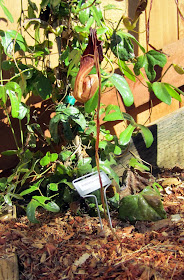Politicians (especially the candidates), pundits, and the media have been telling us lately that “Job Creators” won’t start businesses if taxes are too high. Uh, I deg to biffer.
Point! I just spoke to a friend of mine that I haven’t heard from for a couple years. He is what is known as a “serial entrepreneur.” He starts a business, runs it for some number of years (usually about 10), then sells it for a ton of money and “retires,” only to start another business some while later. The last time we spoke he had just had a child and was “retired.” His “business” was raising his child. That’s what he said. But, just a few years later he has a new startup and is now up to almost 30 employees.
Did he start yet another company because he was concerned that he wouldn’t be able to afford to send his child to college? Hardly. At this point he can eat money for breakfast, lunch, and dinner if he feels the need to increase the fiber in his diet. No, he did it because he is a serial entrepreneur. He can’t help himself – it’s how he’s wired. My friend is a serial job creator and would do it for nothing if he had to.
Point! In 1964 Warren Buffet purchased Berkshire Hathaway, a failing textile company that he subsequently turned into his famous investment powerhouse. That year the top tax rate for income over $500,000 was 77%. The rate for incomes over $250,000 was 76%. The rate above $100,000 was 66%. At the time Buffet was already a wealthy investor. He didn’t need to buy Berkshire Hathaway, and he didn’t need to grow it into the business it is today. If you believe the theory that top tax rates in excess of our current 35% stop “job creators” from investing, then you have to believe that 1964’s top rate of 77% would have sent Warren Buffet running for the nearest lounge chair with a Mai Tai.
Berkshire Hathaway has made Buffet wealthy far beyond what he possessed in 1964, but he could easily have retired at any point along the way. Since 1964 tax rates have come down considerably. However, only 14 of those 47 years have had a top tax rate at or below today’s rate. If top tax rates above the current rate drive “job creators” out of the market, how do you explain Buffet?
Point! Goldman Sachs Group’s CEO, Lloyd Blankfein’s salary is now $2 million, plus he was granted a bonus of $12.6 million this year. That is on top of last year’s paltry $600,000 salary and scant $8.9 million bonus. Of course, one has to wonder why Blankfein would give a rats ass about his compensation package either last year or this, given that his 2007 bonus was – drum roll please - $67.9 million.
Now, I invite you to notice that Blankfein didn’t take his $67.9 million bonus in 2007 and run. He could have retired the day after the check cleared and never looked back. He could have retired and invited 10 other people to retire with him! To make the example even more absurd, let’s compare his 2010 compensation to 2007 - he effectively took a pay cut of $53.3 million. Since a $53.3 million pay cut didn’t make him call it quits, what makes anyone think that raising his top marginal tax rate by a few percent would make him say “Oh, forget it. It’s not worth it being the CEO of Goldman Sachs if the Federal Government is going to take a few hundred thousand more dollars from me. I quit!”
Put another way, the difference between his 2007 and 2010 compensation is 78.5%. So, accepting a measly $14.6 million this year is the same as if he had been taxed 78.5% in 2007. I have yet to hear that Blankfein is considering leaving Goldman Sachs for either a life of leisure or more a profitable position elsewhere in spite of having his income decrease by 78.5%.
If Mr. Blankfien calls me on the phone and personally swears to me on his mother that a 50% tax rate would make him hang up his spurs, I’ll believe him. But short of that, I stand by my claim that no tax rate, up to an including 100%, would convince him to give up the reins of power at the big GS.
Point! In 1959 the top tax rate was… wait for it… 91%!!! Yup, 91%. In that year my father was a chemist working at a perfectly good job at a chemical company outside of Boston, MA. But in spite of having a fine 9-5 job, and in spite of the 91% top tax rate, he loaded himself up with debt and purchased a bankrupt chemical factory in what was (at the time) one of the worst parts of Boston. He rebuilt this bankrupt business, hired people, grew the company, and so on.
He is now 82 years old [in fact, today is his birthday.] He still works 5 days a week, 50ish weeks a year, and proudly states that someday we will carry him out of his office in a box. I think he is absolutely out of his freaking mind, but that is for another blog.
If a top tax rate of 91% didn’t inhibit my father from leaving a safe, comfortable job, taking on debt, and working his butt off for 52 years, I am hard pressed to believe that a modest increase in America’s current top rate will change the rate of job creation. He will no doubt piss blood when he reads this.
Point! When I worked at Microsoft, I, and almost all of the “Software Design Engineers” that I worked with, were complete and total geeks. We loved writing software and would have done it even it if paid poorly. Hell, there are and have always been a lot of people that write “shareware” or “freeware” at home at night after working at some other job.
The people I know that left Microsoft quit for one of a handful of reasons: (1) Burnout (that was me,) (2) leaving to travel for a while, then ultimately returning to the software biz, either at Microsoft or elsewhere, or (3) starting a company of their own. Back in my day, Microsoft paid so well that after a few years people could easily leave. But guess what – I have friends that were there for years before I arrived and are still there years later. I won’t name names, but I promise you that they can afford to retire. But they don’t retire and almost no pay cut or tax increase will make them conclude that working at Microsoft isn’t worth it. A good friend of mine, who shall remain nameless, is currently the longest continuously employed person at Microsoft. If it were just money, he could have retired before I even started at the company.
Certainly Bill Gates could have retired decades before he finally did. The same can be said for Steve Jobs, Larry Ellison (Oracle), Bill Joy (Sun Microsystems,) etc., etc. I have to believe that even if their tax rate was 100% they would be at their desks every day (except for Steve, whom I’m sure would be at his desk today if he could be.)
But, OK, software engineers (other than the CEO’s listed above) aren't necessarily job creators, so let’s continue.
Point! Bill “Papa Bear” O’Reilly stated on his Fox News show,
The O’Reilly Factor, that if the tax rate hit 50% he might quit his job, because, he said, why work if the government is going to take half of it. Later, in an interview on The Daily Show, Jon Stewart called him on it, asking if that statement were really true. O’Reilly replied that of course it wasn’t – he was just making a point. O’Reilly is a celebrity with a huge following and enormous influence. I guarantee you that he would continue doing the O’Reilly Factor if he had to pay for the privilege. A 200% tax rate wouldn’t get him off the air.
[Aside: I personally have a very big problem with the anchor of a “news” show stating an untruth, even if it is hyperbole during an editorial commentary. If O’Reilly says something like “a 50% tax rate might make me stop doing this show,” and that isn’t true, he should be required to immediately state that it isn’t true as part of his commentary. Retracting it later on another program on another station doesn’t cut it.]
Point! Celebrities – all of ‘em, just keep on going. You name it, regardless of the time period, regardless of the tax rate, movie stars, musicians, authors, painters, and celebrity chefs, down through the ages have performed their craft regardless of compensation or the need for additional income. W. C. Fields, Mohammed Ali, David Bowie, Jennifer Anniston, and Bruce Willis – not one of them ever quit because their taxes were too high. Does anyone think that Madonna bases her decision to release another album based on a top tax bracket of 35% vs. 36%? Did Leonardo DiCaprio consult with his accountant about how to shield his income from taxation before accepting the role of Jack Dawson in
Titanic? When congress and the President were fighting over whether or not to raise the top tax rate last fall, was Frank Gehry poised to close his architectural firm in the event the rate went up?
I gotta say that the answer on all counts is “no.”
I see two main kinds of “job creators” in this country: (1) Individuals who are not rich who start small businesses for the first time, and (2) wealthy individuals who create new businesses or remain in positions at existing enterprises. Let’s look at them:
- People without considerable wealth start businesses in America all the time. From taco trucks to hairdressers to carpet cleaning companies to makers of high-tech widgets and low-tech widgets, American entrepreneurs are company-making machines. These people start their businesses for a variety of reasons – they have a dream of getting rich; they hate working for someone else; they see an unfilled niche and go for it; there isn’t a job available that fits their needs; and on and on. The suggestion that high tax rates on the ultra-wealthy would stop these entrepreneurs is ludicrous. They beg and borrow start-up capital from anywhere they can – friends, relatives, neighbors, and if possible, banks – throw caution to the wind, and go for it. They are not being held back by the fear that the taxes on their future incomes will someday be too high.
- Wealthy individuals, as I have already shown, start enterprises or remain at work for reasons that have nothing to do with making ever more money. Or, if it is about money, the dollars are just “chips” on the gaming board. They want more chips to prove their self-worth, not because they need to buy something they can’t already afford. They love the game, or are addicted to the game, or don’t know what else to do but play the game. But guess what, if the dollars are just chips in a game of who-has-the-biggest-schlong, raising the top tax bracket will affect everyone playing the game equally – the game will not be affected, and the players won’t stop playing.
So, come on legislators, journalists, and pundits, give me a break. If you want to have an intelligent discussion about fairness in tax rates, the appropriate roles of government, the effects of fiscal policy on the economy, interventionist vs.
laissez faire policies, the past performance of the government in utilizing tax revenues, and so on, then I am all ears. But please, knock it off with the “increasing taxes on job creators will kill the economy” bunk. It just ain’t true and we all know it.






























